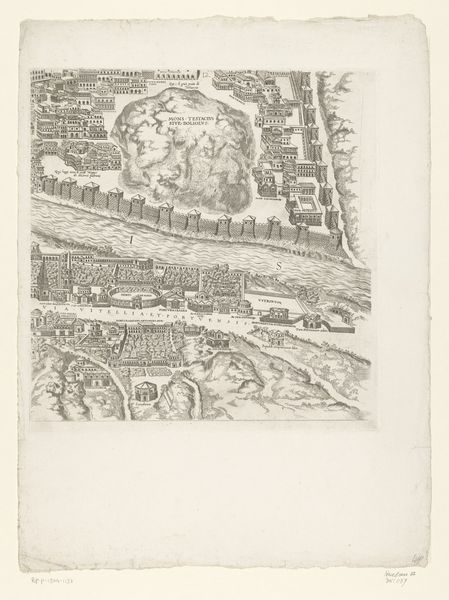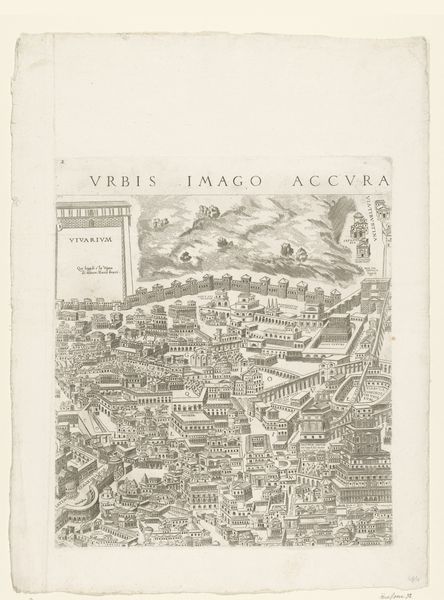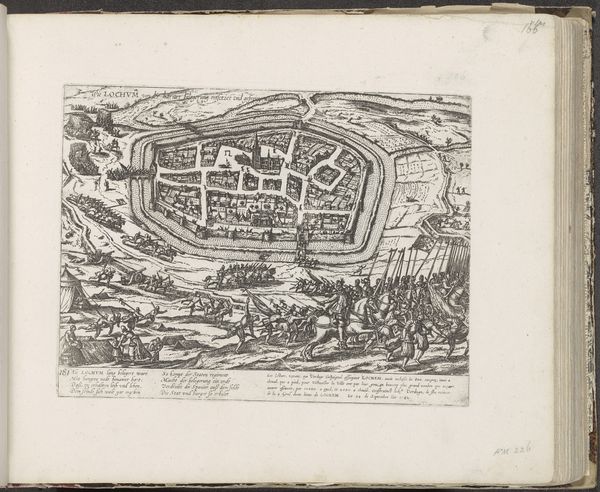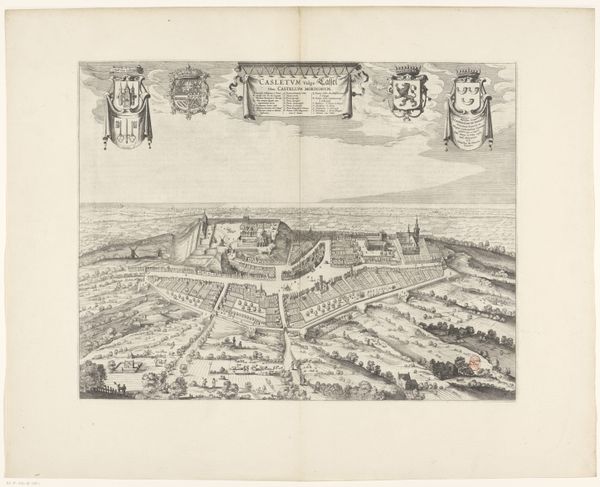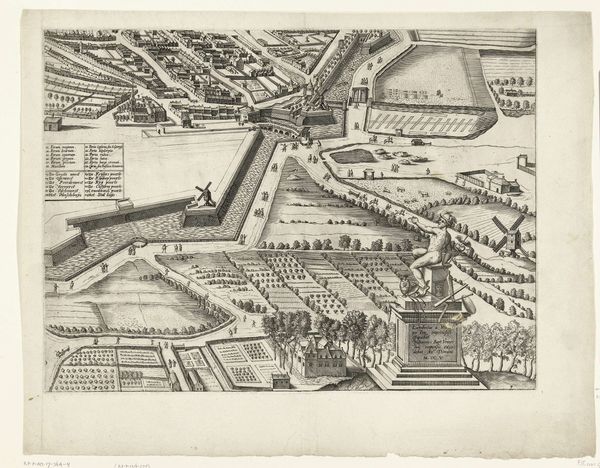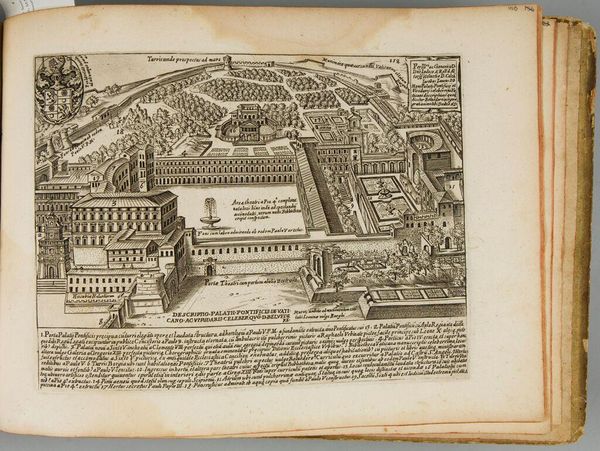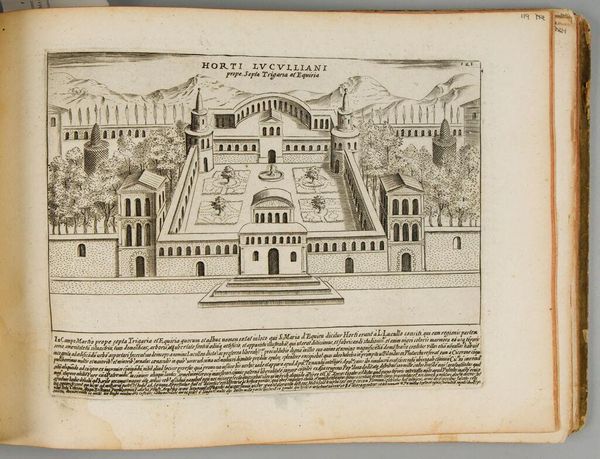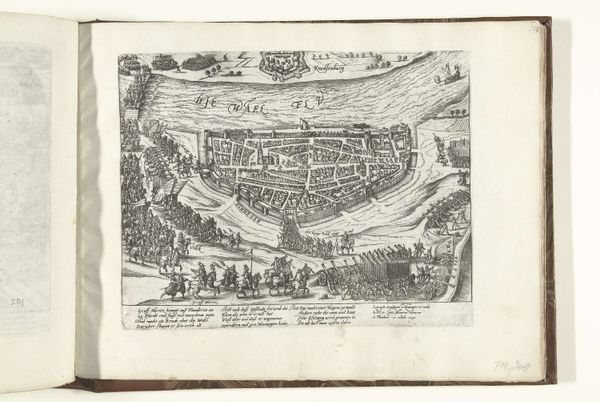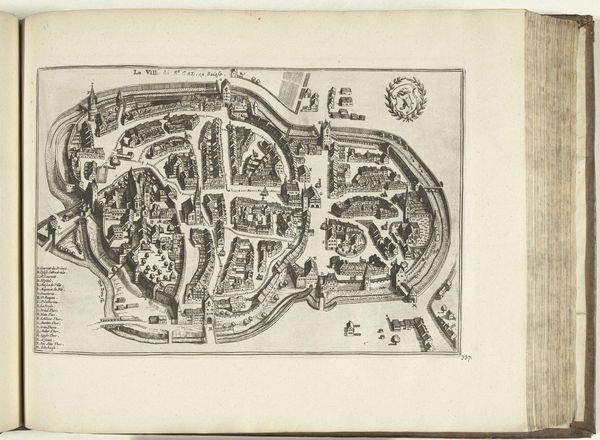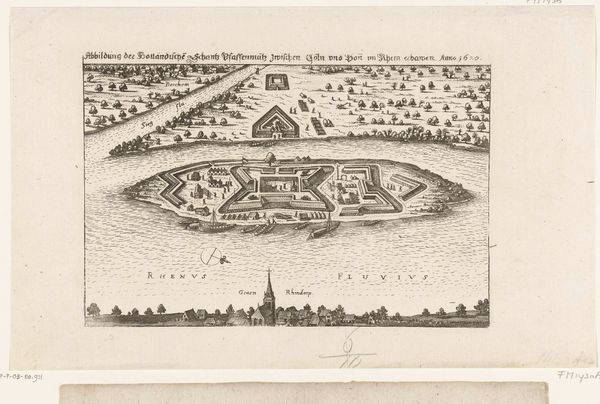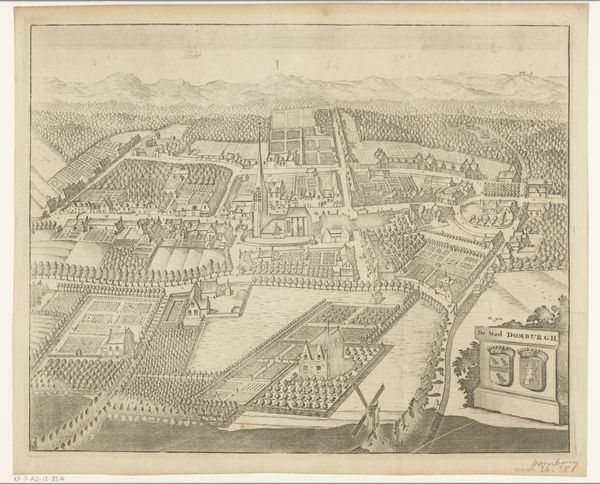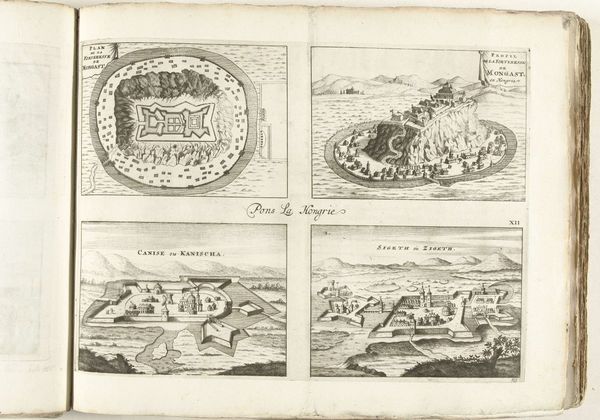
print, engraving, architecture
# print
#
pen sketch
#
old engraving style
#
ancient-mediterranean
#
cityscape
#
engraving
#
architecture
Dimensions: height 413 mm, width 372 mm
Copyright: Rijks Museum: Open Domain
Curator: This is an engraving from 1773 titled "Plattegrond van Rome in de Romeinse tijd (vierde deel)", which translates to "Map of Rome in Roman Times (fourth part)". It provides a bird's-eye view of the ancient city. Editor: It’s like stepping into a meticulously rendered dream. So precise and ordered, yet that aged paper gives it a haunted feeling. I get a strong sense of monumental permanence undermined by time’s inevitable erosion. Curator: Indeed. It's fascinating to consider the techniques used. This print, most likely etched in copper, showcases the engraver's skillful use of line work to convey texture and form. What stories of craft does that paper itself hold after its creation? Its materiality alone prompts numerous questions. Editor: For me, it’s the human element lurking within all those geometric shapes. I keep imagining the hands that built all those structures, the lives unfolding within those walls. This is about more than bricks and mortar; it captures a sense of place brimming with echoes of human activity, struggles and glories. It's amazing, seeing what was so essential for civilization. Curator: Absolutely. And by examining such printed images of architecture alongside artifacts of the time, we can better understand the intersection between image culture and urban planning in the 18th century. These prints democratized access to visualizations of cities. Editor: That makes me ponder: was it created for a sense of historical appreciation, almost like a remembrance? There’s something very somber about the scale of it all. A lost world resurrected on paper... or maybe one being imagined as it used to be. It gets you thinking! Curator: Yes. Ultimately, a work like this invites us to consider not just what Rome was, but also what it *became* in the imagination of later eras through artistic representation and technological means. Editor: So well said! This detailed rendering offers an amazing, melancholy portal, truly allowing us to grasp what used to exist—how things that we cannot imagine and that felt eternal faded over time. Powerful stuff.
Comments
No comments
Be the first to comment and join the conversation on the ultimate creative platform.
